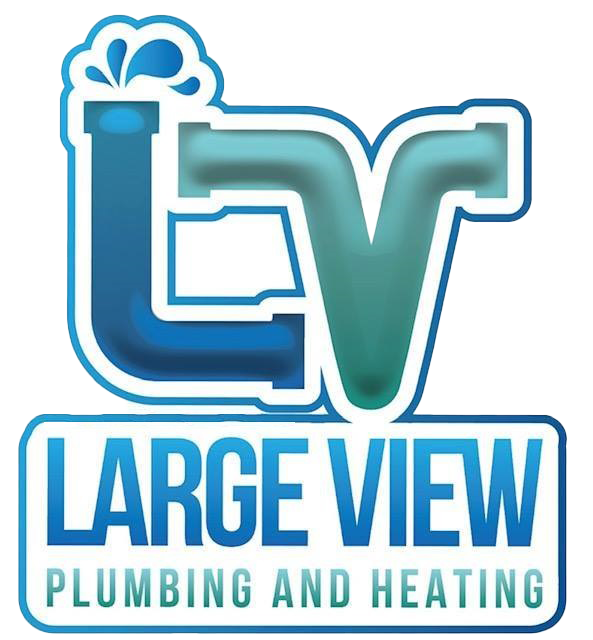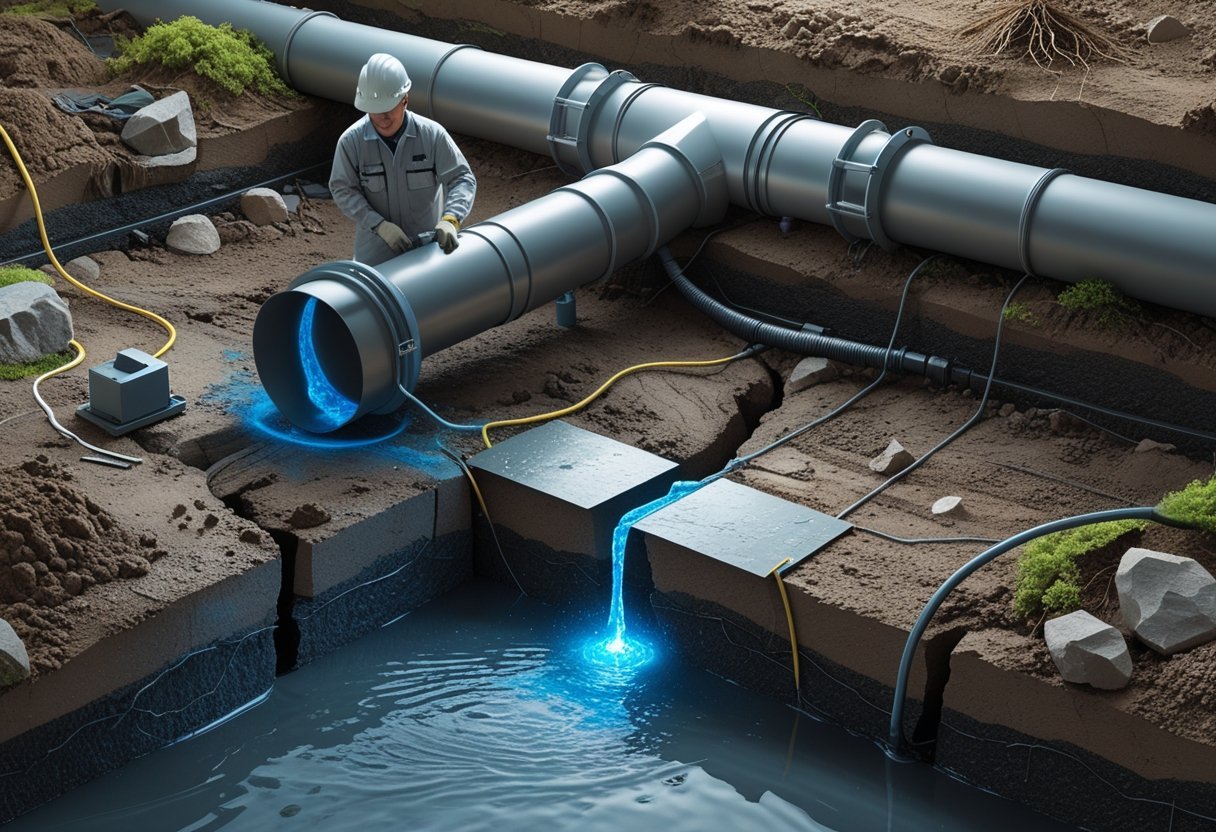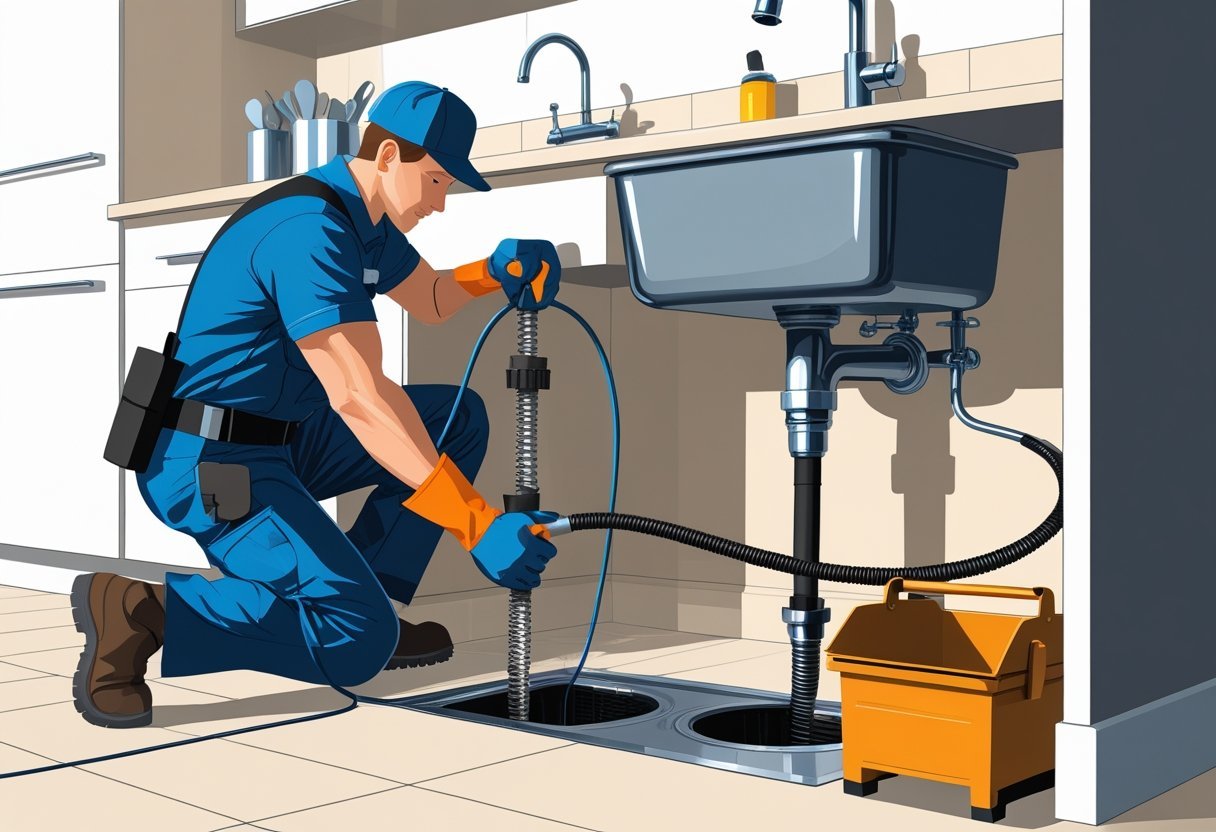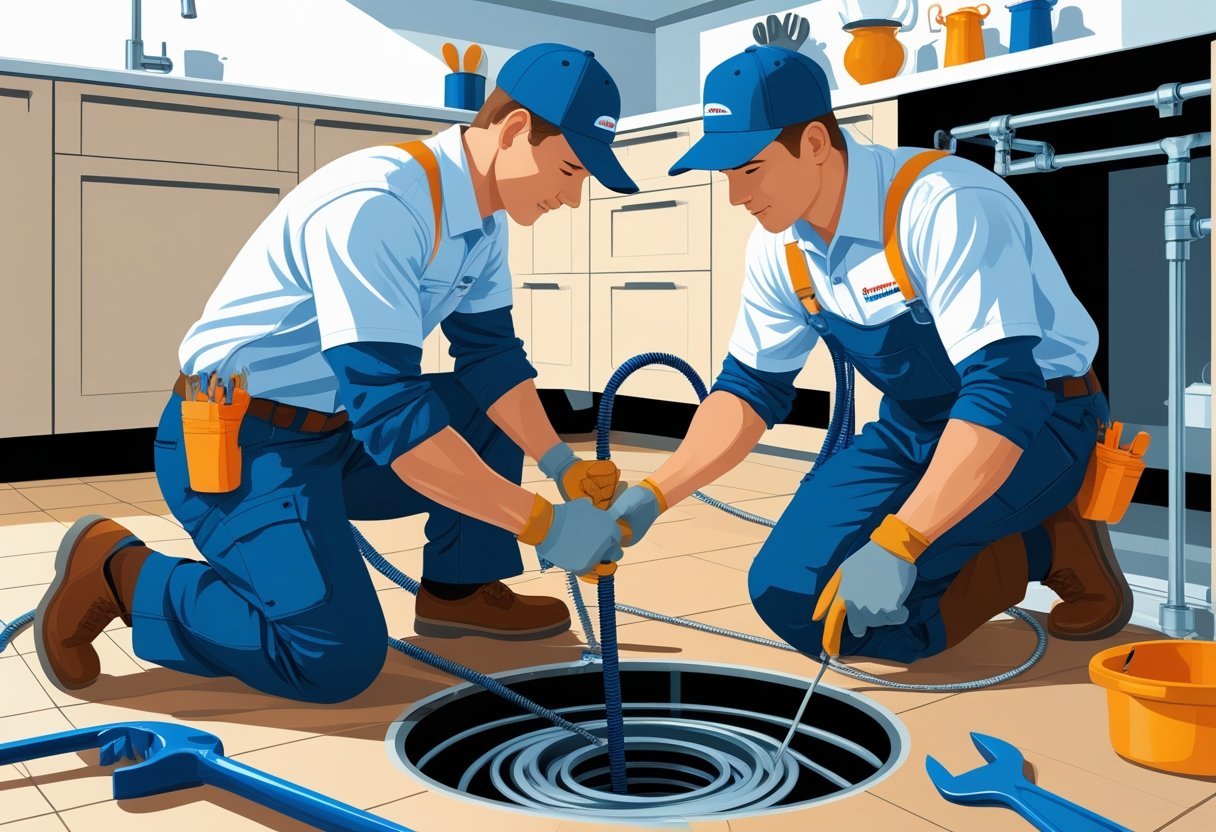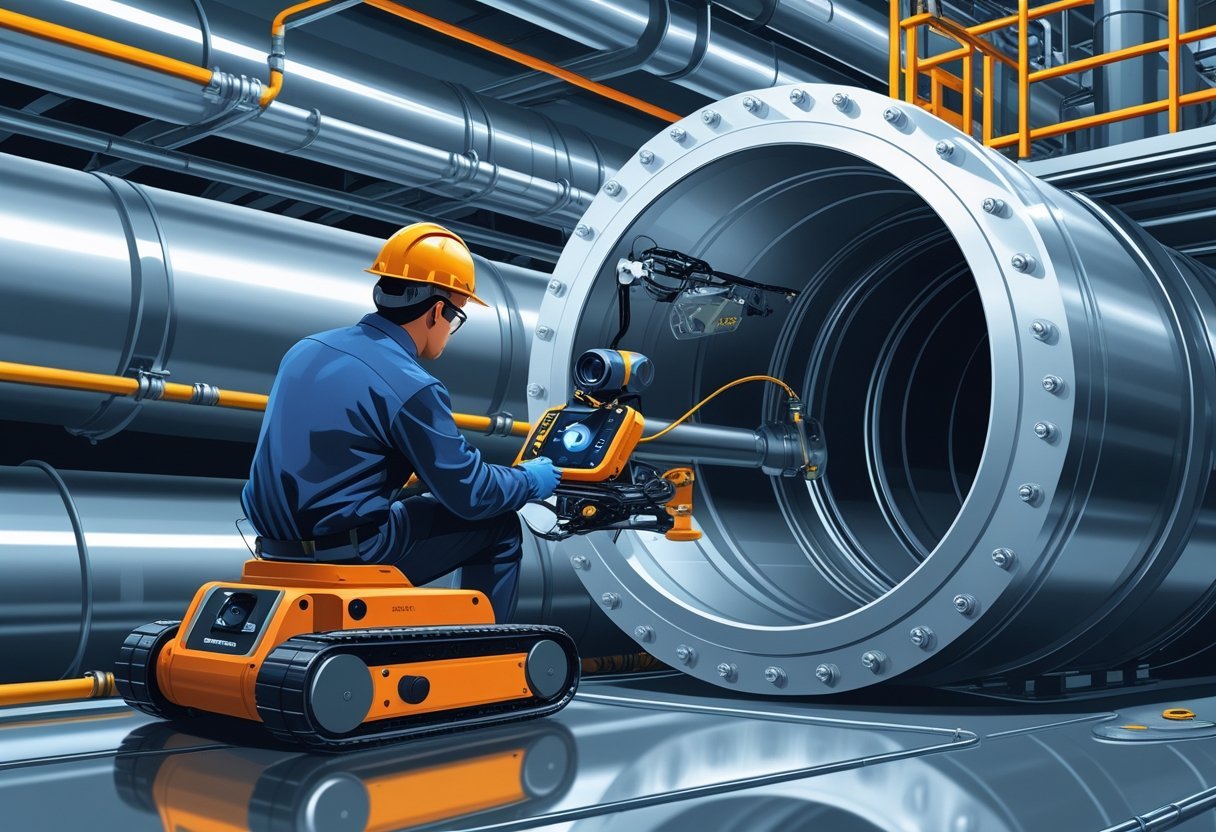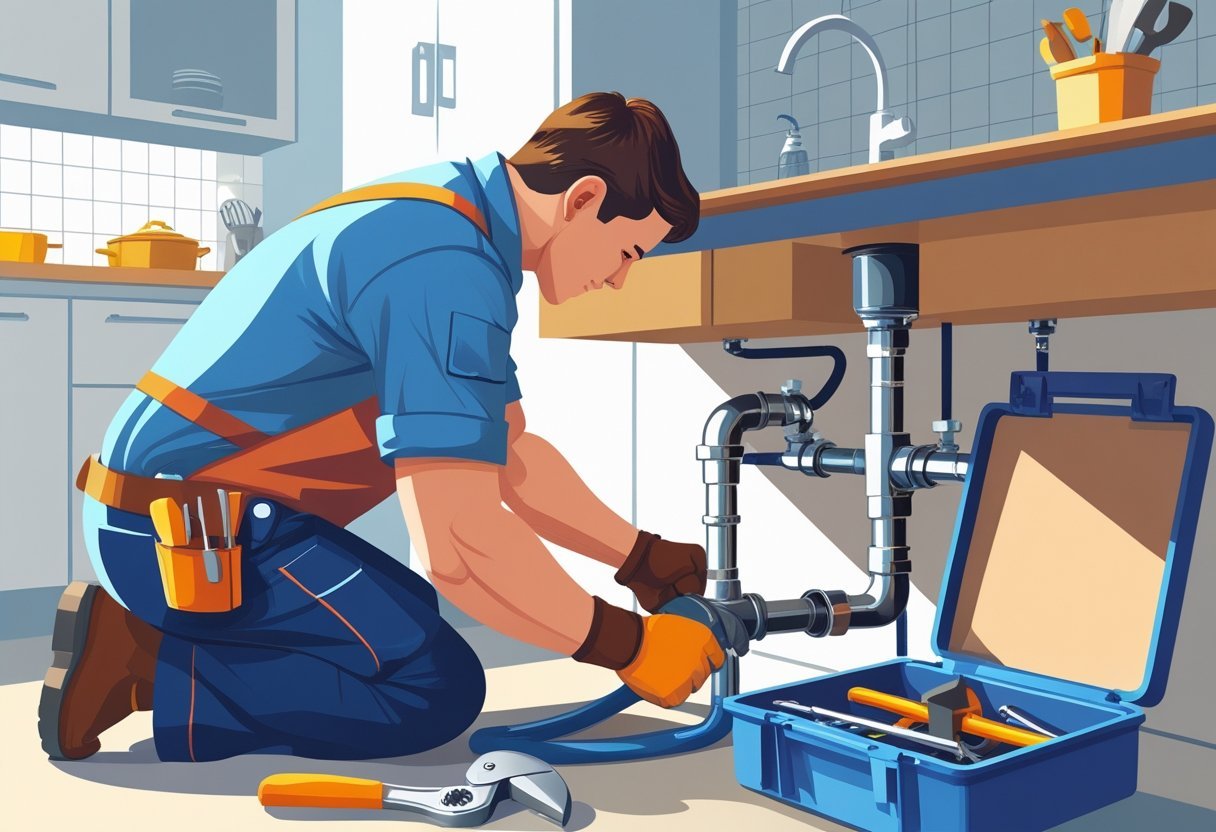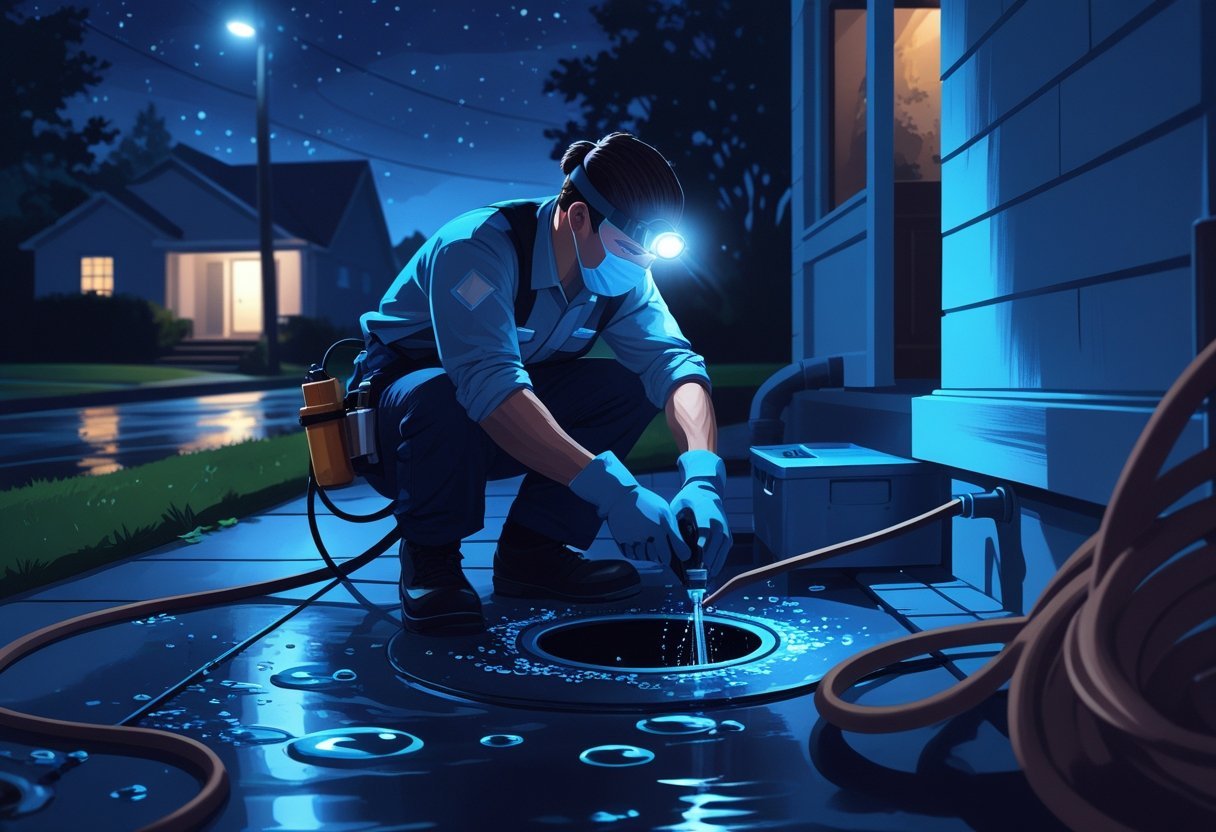When deciding between a mini split and central air for your North Shore home, your choice largely depends on your home’s layout and your comfort needs. Mini splits offer precise temperature control for individual rooms, making them ideal if you want to efficiently cool specific areas without relying on ductwork. Central air systems, on the other hand, work best in homes that already have ducts installed and provide consistent cooling across the entire house.
If your home lacks ductwork or you prefer zoned cooling to save energy, mini splits are often a cost-effective and flexible option. However, for larger homes or full-house temperature control, central air remains a reliable solution. Large View Plumbing & Heating can help you weigh these options, offering expert advice tailored to your North Shore property to ensure you get the system that fits your needs.
Key Differences Between Mini Split and Central Air for North Shore Homes
Choosing between a mini split and a central air system impacts your home’s comfort, energy use, and installation process. Each system has unique features related to design, ductwork, and temperature control that affect how you experience heating and cooling in your North Shore home.
System Design and Components
A mini split is a ductless system made up of an outdoor heat pump unit paired with one or more indoor air handlers. Each indoor unit is installed in a specific room or zone, allowing direct delivery of heating or cooling without using ducts. This design can save space and reduce energy loss.
Central air conditioning uses an outdoor condenser connected to an indoor air handler that distributes conditioned air through a network of ducts. The system relies on vents and return air pathways to circulate air evenly throughout your home. Central air units are typically installed during construction or major renovations.
Because mini splits operate without ducts, their installation can be quicker and less invasive. Central air conditioning benefits from established ductwork but may require significant modifications if ducts are old or inefficient. For professional guidance on these systems, Large View Plumbing & Heating can provide expert assessment and solutions.
Ductwork Requirements
Ductwork is a vital factor when deciding between mini split and central air. A mini split system does not require ducts, making it ideal for homes without existing ductwork or for additions where extending ducts would be costly or impossible.
Central air systems depend entirely on well-designed ductwork to distribute air. If your North Shore home has aging, leaky, or poorly insulated ducts, the efficiency and comfort of a central air system can be compromised. Repairing or replacing ducts adds to the total cost and complexity of the installation.
Additionally, ducts can collect dust, mold, and allergens, affecting indoor air quality. Mini splits’ ductless nature may simplify maintenance and improve air cleanliness in your living spaces. Large View Plumbing & Heating can inspect your ductwork to advise on whether duct repairs or switching to a mini split might be the better option.
Temperature Control and Zoning
Mini splits give precise zone control by allowing you to set temperatures independently in each room or area with its own indoor air handler and thermostat. This zoned cooling and heating reduce energy waste by cooling or heating only occupied spaces.
Central air systems typically operate off one or two thermostats controlling the entire duct system, making whole-house temperature adjustments. While some central systems offer zone control with dampers, this is less common and often expensive to retrofit.
If you value personalized comfort in multiple areas of your home and want to optimize energy efficiency, a mini split’s zoning ability is advantageous. Central air systems provide consistent whole-home climate control but with less flexibility for individual room settings. Consult with Large View Plumbing & Heating for customized HVAC system design tailored to your preferences.
Energy Efficiency and Environmental Impact
Choosing between mini split systems and central air conditioning affects your home’s energy use and environmental footprint. Efficiency differences come down to how energy is lost, the system’s ratings, and how that translates to your utility bills and carbon emissions.
Duct-Related Energy Loss
Central air conditioning systems rely on ductwork to distribute cooled air throughout your home. However, this ductwork can cause significant energy loss—often around 20-30%—due to leaks, poor insulation, or damage. This loss means your system works harder, consuming more electricity to maintain desired temperatures.
Mini split systems are ductless, eliminating these losses entirely. Because the cooling is delivered directly to each zone without ducts, you see more consistent temperatures and better energy efficiency. If your North Shore home lacks existing ducts, installing a mini split avoids costly ductwork repairs or additions.
SEER and HSPF Ratings
SEER (Seasonal Energy Efficiency Ratio) and HSPF (Heating Seasonal Performance Factor) are key metrics that indicate a system’s efficiency. Mini splits typically have higher SEER and HSPF ratings compared to central air systems, meaning they use less electrical energy to cool and heat.
For example, a mini split might have a SEER rating above 20, whereas standard central air systems usually rate around 14-16. Higher SEER ratings translate to lower operating costs and greater energy savings, especially important in climates like the North Shore’s, with fluctuating seasonal demands.
Carbon Footprint and Utility Bills
Because mini split systems reduce energy loss and operate more efficiently, they contribute to a smaller carbon footprint for your household. Using less electricity means fewer greenhouse gas emissions from power plants, making mini splits an environmentally preferable option.
Lower energy use also impacts your utility bills. By cooling or heating only occupied zones, mini splits reduce wasted energy, unlike central air that conditions the entire house. For reliable installations and advice tailored to North Shore homes, Large View Plumbing & Heating can help optimize your system choice to maximize efficiency and savings.
Installation, Costs, and Home Compatibility
When choosing between a mini split and central air, consider how installation complexity and home layout affect costs and suitability. Your home’s size, existing ductwork, and whether it’s older or new directly influence installation requirements and expenses. Understanding these factors helps manage your budget and system performance expectations.
Upfront and Installation Costs
Mini split systems typically range from $2,000 to $14,500 in installation costs. The exact price depends on how many indoor units you need and the complexity of refrigerant line placement. Mini splits generally have higher upfront costs if you require multiple zones or larger coverage.
Central air systems cost roughly $3,900 to $8,000 if your home already has ductwork. Without ducts, the price can increase significantly due to the need for retrofitting. This makes upfront costs for central air less predictable in older homes lacking existing duct systems.
Choosing between these systems often depends on your budget and home layout. A professional HVAC contractor like Large View Plumbing & Heating can provide accurate estimates based on your North Shore home’s specifics.
Installation Process Overview
Mini split installation involves mounting one outdoor condenser unit paired with indoor air handlers. Refrigerant lines connect these units, requiring careful routing but no ductwork. The process is less invasive, making it quicker and often less disruptive than installing central air.
Central air installation focuses on integrating the system with existing ductwork or installing new ducts, which can be labor-intensive. The outdoor condenser connects to an indoor evaporator coil linked to your home’s ducts. This makes the installation more complicated in homes without pre-existing ducts.
Given these differences, your home’s design and whether you want minimal disruption can guide your choice. Experienced teams from companies like Large View Plumbing & Heating ensure proper installation to maximize efficiency and comfort.
Older Homes and Existing Ductwork
Homes built before duct systems became standard may not have the necessary ductwork, making central air installation costly and disruptive. Duct retrofit can extend installation time and raise expenses substantially, sometimes doubling costs.
Mini splits excel in these older homes because they don’t require ducts. You only install an outdoor unit and one or more indoor air handlers, which can be placed in individual rooms or zones. This setup allows targeted cooling and heating without major structural changes.
If your older North Shore home lacks ductwork, mini splits are often the better choice for efficiency and cost-effectiveness. However, if ducts exist, central air might be simpler and less expensive to install. Consulting with an HVAC professional familiar with your area, like Large View Plumbing & Heating, will help you understand your home’s compatibility and options.
Performance, Comfort, and Control
Choosing between mini-split and central air systems involves understanding how each handles heating, cooling, noise, and air quality. Your decision will affect how well you control temperature in specific rooms and the overall comfort of your home environment.
Heating and Year-Round Comfort
Mini-splits often use heat pumps, which provide both heating and cooling efficiently throughout the year. This means a single system can cover your home’s heating needs during cold North Shore winters and cool it in summer. Their ability to create multiple zones allows you to set different temperatures for individual rooms.
Central air typically pairs with a furnace or boiler for heating, delivering consistent warmth throughout the house. However, this single-zone setup limits your ability to control comfort on a room-by-room basis. If you want precise temperature settings or need to heat specific areas like additions or basements separately, mini-splits provide better flexibility.
Noise Levels and Indoor Air Quality
Mini-split indoor units, especially wall-mounted ones, operate quietly, which can improve your home’s comfort without distracting sound. Their design also minimizes the noise compared to traditional air handlers in central air systems. The outdoor unit is placed away from living spaces to further reduce noise.
Central air’s air handlers and ductwork can create ambient noise, especially if ducts are older or not well insulated. Central systems offer advanced filtration options that improve indoor air quality over mini-splits. If air quality is a priority, you might consider integrating high-efficiency filters or UV light systems with your central air setup for cleaner air circulation.
Aesthetic Considerations
Mini-split indoor air handlers typically mount on walls and have a sleek, modern appearance, but they are visible in each room they serve. For some homeowners, this might affect the decor, but many models blend well with interior design.
Central air vents are discreetly integrated into ceilings, floors, or walls, often making them less noticeable. Because the main components are hidden within ductwork, central air systems maintain a cleaner look without indoor units on display.
When installing either system, working with a professional like Large View Plumbing & Heating can help ensure your home’s aesthetics are preserved while meeting your heating and cooling needs efficiently. Their expertise in multi-zone systems and air handling units is valuable for optimizing comfort and performance.
Maintenance and Longevity
Knowing how much maintenance your cooling system requires and its lifespan can help you make a smart choice. Consider the differences in servicing needs, duct cleaning, and long-term savings before deciding between mini split and central air for your North Shore home.
Servicing and Filter Requirements
Mini split systems use individual air handlers with washable or replaceable filters. These filters generally need cleaning every 1-3 months to maintain efficiency and air quality. You can easily perform this task yourself, reducing ongoing maintenance costs.
Central air systems have larger filters located in the HVAC return duct. These filters require replacement about every 1-3 months as well, but you may also need routine professional servicing to maintain the larger equipment.
Because mini splits are ductless, servicing mainly focuses on the indoor and outdoor units. Central air requires more extensive HVAC checks due to the complexity of ductwork and the central blower. Large View Plumbing & Heating can assist with professional maintenance for both system types to ensure optimal performance.
Duct Cleaning and Upkeep
Mini split systems eliminate the need for ducts, removing concerns about duct cleaning. Without ducts, you avoid dust buildup and potential mold growth within the system. This ductless design means fewer hidden maintenance problems and better indoor air quality.
Central air systems rely on ductwork, which must be cleaned periodically to maintain airflow and prevent allergens. For North Shore homes, especially older ones, duct cleaning every 3-5 years is recommended. Neglecting ducts can lower efficiency and increase health risks.
If your home already has ducts, central air works well with them but expect added upkeep, including occasional sealing and inspections. Large View Plumbing & Heating offers duct cleaning and inspection services to support your system’s health.
System Lifespan and Long-Term Savings
Typical mini split systems last about 15-20 years with proper care. Their simpler design and lower wear on ductless components can translate to reduced repair costs over time. The ability to control rooms individually can also lower your energy bills by avoiding unnecessary cooling or heating.
Central air systems usually have a lifespan of 12-15 years. Factors like duct condition, frequency of maintenance, and system size affect longevity. Because central systems cool the entire home at once, energy costs may be higher if you don’t use zoning controls.
When considering long-term savings, mini splits can be more cost-effective in homes without ductwork or for spot cooling. Large View Plumbing & Heating can help you evaluate both options to ensure your investment matches your home’s needs and your budget.
Choosing the Right System for Your North Shore Home
Selecting between a mini split system and central air conditioner for your North Shore home depends on several key factors. These include your home’s design, your budget, and expert advice tailored to your specific needs. Each choice impacts comfort, efficiency, and long-term costs differently.
Home Layout and Cooling Needs
Your home’s layout plays a critical role in determining which system fits best. If you have an older North Shore home without existing ductwork, a mini split heating and cooling system offers a ductless solution that can efficiently cool and heat individual rooms.
Central air conditioning, with a single condenser and connected ducts, is better suited for whole-house cooling in homes with existing duct infrastructure. It provides uniform temperature control across all spaces.
Mini splits excel in homes where personalized temperature zones are desirable. Indoor air handlers installed in each room allow you to control the climate independently, which can reduce energy use if some rooms are rarely occupied.
Consider the size and insulation quality of your home, too. Larger homes generally benefit from central air conditioner systems, while smaller or multi-level homes may find mini splits more adaptable to their cooling needs.
Budget and Return on Investment
Your budget directly impacts whether a mini split or central air system is the right choice. Generally, mini split systems have a higher upfront cost due to multiple indoor air handlers and more complex installation without ductwork.
Central AC units typically cost less initially, especially if your home already has ductwork in place, reducing installation expenses. However, central systems may have higher operating costs if you cool an entire house uniformly, even unused areas.
Mini split heating and cooling systems often offer lower energy bills over time through zoned temperature control, which improves efficiency and reduces waste. This can provide a better long-term return on investment for energy-conscious homeowners.
Large View Plumbing & Heating in North Shore can provide a detailed cost analysis tailored to your home to help you assess installation and operating costs for both systems before making a decision.
Professional Recommendations
Consulting with HVAC experts is crucial to making the right choice for your North Shore home. Professionals like those at Large View Plumbing & Heating assess your home’s unique characteristics, such as insulation, window placement, and airflow patterns, to recommend the optimal system.
They can also address aesthetic preferences. Mini split systems are less invasive since their indoor air handlers are compact and mounted high on walls, preserving your home’s design. Central air conditioner components are mostly hidden but require visible vents and ductwork.
Experts evaluate how each system matches your home’s energy efficiency requirements and your lifestyle. Their guidance ensures the installation meets local standards and delivers maximum performance.
Working with trusted professionals helps ensure your investment in heating and cooling withstands North Shore’s seasonal demands with reliable comfort all year.
Frequently Asked Questions
Choosing between mini splits and central air involves understanding costs, energy use, heating and cooling capacity, maintenance needs, and how each system performs in the North Shore climate. These factors greatly impact your comfort and expenses.
What are the cost differences between installing mini splits and central air in North Shore homes?
Mini splits typically have lower upfront installation costs because they don’t require ductwork. Central air installation is usually more expensive due to ductwork and more complex labor.
If you have an existing duct system, central air might involve less renovation cost. Large View Plumbing & Heating can provide detailed estimates tailored to your home’s needs.
How do energy efficiency ratings compare between mini splits and central air systems?
Mini splits tend to have higher seasonal energy efficiency ratios (SEER) because they avoid duct losses. Central air loses energy through ducts, lowering overall efficiency.
Heat pump mini splits often have better ratings for both cooling and heating, which matters in the North Shore’s variable climate.
What are the implications on electric bills when choosing mini splits over central air?
Because mini splits target individual zones, you can reduce energy use by only cooling or heating occupied rooms. This selective conditioning can lower electric bills.
Central air cools the whole house uniformly, which may waste energy if some areas are rarely used. Your savings depend on your home’s size and usage habits.
Can mini splits provide adequate heating and cooling in new construction homes on the North Shore?
Yes. Modern mini splits deliver effective heating and cooling suitable for new builds thanks to improved inverter technology and variable-speed compressors.
They can be sized precisely for each room, ensuring consistent comfort without oversized equipment. Consult a professional like Large View Plumbing & Heating for system design.
For North Shore climates, which system is better for maintaining consistent indoor temperatures?
Central air generally provides more uniform temperature control across the entire house. Mini splits offer more customizable zone control, which can result in slight temperature variation.
If consistent whole-home comfort is a priority, central air might be preferable. For flexibility and room-by-room control, mini splits are ideal.
What are the maintenance requirements for mini splits versus central air systems?
Mini splits require cleaning of indoor air handlers and outdoor units but have fewer mechanical components to maintain.
Central air systems need regular duct inspection, filter changes, and coil cleanings. Both require professional service at least annually for optimal function.
